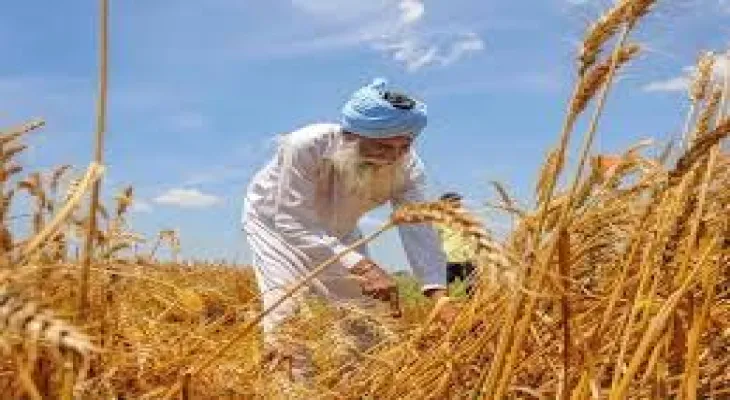Search here
Newspaper
Search here

Arab Canada News
News

Published: April 30, 2022
New Delhi - An unusually early heatwave that broke records in India has led to a decline in wheat crops, raising questions about how the country balances its domestic needs with ambitions to increase exports and compensate for shortages due to the Russian war in Ukraine.
Massive landfill fires have erupted in the Indian capital of New Delhi in recent weeks. Schools were closed for a week in the eastern Indian state of Odisha, and in the neighboring state of West Bengal.
On Tuesday, Rajgarh, a city of over 1.5 million people in central India, was the hottest in the country, with daytime temperatures peaking at 46.5 degrees Celsius.
Temperatures exceeded the 45-degree Celsius mark in nine other cities. But the March heat — the hottest in India since 1901 — impacted crops.
Wheat is highly sensitive to heat, especially during the final stage when the grains mature and ripen. Indian farmers time their planting so that this stage coincides with the usually cooler Indian spring.
Frederik Otto, a climate scientist at Imperial College London, said climate change made the heatwave in India hotter. She said that before human activities increased global temperatures, heatwaves like this year’s would have hit India once about every half-century.
“But now we can expect these high temperatures on average once every four years.” India’s exposure to severe heat increased by 15% from 1990 to 2019, according to a 2021 report by the medical journal The Lancet. It is among the top five countries where vulnerable people, such as the elderly and the poor, are most exposed to heat.
The report mentioned that Brazil and India have the highest heat-related death rates in the world. Farm workers like Baldev Singh are among the most vulnerable.
Satinder Singh, a farmer in Sangrur in the northern state of Punjab, watched his crop wither before his eyes as the usually cool spring turned intensely hot.
He lost about a fifth of his yield and others lost much more. Singh said: “I fear the worst is yet to come.” Punjab is the “breadbasket” of India and the government has encouraged wheat and rice cultivation here since the 1960s. It usually is the largest contributor to India’s national reserves, and the government hoped to buy about a third of this year’s stocks from the region.
Although it is the world’s second-largest wheat producer, India exports only a small portion of its crop. It was looking to capitalize on the global disruption to wheat supplies from the Russian war in Ukraine and find new markets for wheat in Europe, Africa, and Asia.
This seems uncertain given the difficult balance the government must maintain between supply and demand. It needs about 25 million tons (27.5 million US tons) of wheat for its vast food welfare program that usually feeds more than 80 million people. Before the pandemic, India had massive stocks far exceeding its domestic needs — a barrier against famine risk.
Sharma said these reserves were pressured by free grain distribution during the pandemic to about 800 million people — vulnerable groups such as migrant workers. The program was extended until September but it is unclear if it will continue afterward.
Comments